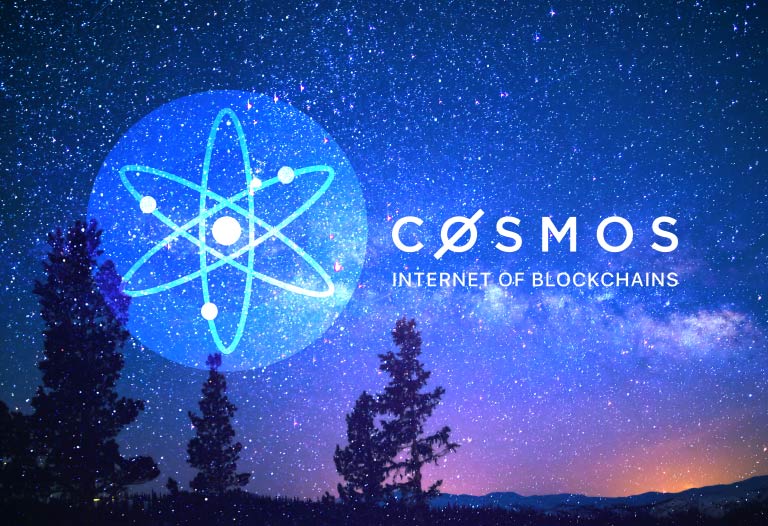
Coinposters
Cosmos (ATOM): The Internet of Blockchains

Atom, a cryptocurrency based on the Cosmos blockchain, has a market value of $5.72 billion and has increased by more than 20% in the last week. Experts predict Atom will become more valuable in the future as the Cosmos network expands. Its price has risen by almost 295 percent in only one year, from $6.4 to over $25. But what exactly is Cosmos, and why are experts so enthusiastic about it? Here’s everything you need to know .
What is Cosmos?
Cosmos is a network of blockchain networks. This notion is referred to as the “Internet of Blockchains” by developers. The project’s purpose is to make it possible for different blockchains to connect with one another in a seamless manner. Cosmos transforms market friction into a positive driving force for progress by allowing any blockchain to interact, share data, and transact with any other.
Cosmos is more than just a link between blockchains. This platform also comes with a comprehensive set of products and services, making it a compelling contender in the market. Cosmos delivers a cutting-edge technological stack that gives developers access to strong tools that speed up the building of blockchains.
Within the Cosmos ecosystem, developers may design complicated blockchains in less than a week. In comparison, utilizing 2cd-generation blockchains, the identical procedure would take weeks. As a result, the network continues to witness a growing Dapp community, which contributes to more user involvement.
History
The network is built on Jae Kwon’s Tendermint consensus system, which he designed in 2014. Kwon was joined by Zarko Milosevic and Ethan Buchman to create the Cosmos interoperable ecosystem; he later stepped away from the project in 2020. It is the most comparable project to Polkadot, which likewise aims to build an ecosystem of interoperable blockchain networks. Cosmos, unlike Polkadot, places a premium on independent blockchains’ sovereignty, which means they must protect themselves, have their own government, and run their own validators.
How it Works
Cosmos is a project aimed at establishing an interoperable network of diverse blockchains. The network, which was founded in 2014 by Ethan Buchman and Jae Kwon, consists of a Proof of Stake mainnet and customizable blockchains known as Zones.
Cosmos Hub, the primary chain, transports assets and data between linked Zones while also providing a common layer of security. Tendermint, Cosmos’ unique consensus mechanism, and a generic application interface are used to connect them all. Cosmos fees are paid in ATOM, the network’s cryptocurrency. The network is comprised of three layers:
- Networking – Allows hub blockchains to connect with transaction confirmations and other consensus messages.
- Application – Notifies the network of changes in transaction and balance status.
- Consensus – Determines how nodes agree to add new transactions.
A range of open-source tools and apps integrate these three levels. Tendermint, for example, combines the networking and consensus layers into a single, ready-to-use engine. Tendermint allows blockchain developers to focus solely on the application layer, saving them time and money.
Benefits
Cosmos brings a slew of benefits to the marketplace. For starters, the platform may be completely customized. Developers have the freedom to design and release new blockchain apps and platforms. Interestingly, the network operates without the assistance of a central body. The network facilitates inter-blockchain transactions in this way, allowing developers to programmatically transfer data and tokens.
The Internet of Blockchains
The Cosmos network allows developers to continually adding new chains to the hub, each with its own set of features. This results in a vast network of chains that are continually communicating and exchanging data in real time. This is similar to the Internet-of-Things (IoT) idea, in which all items in a network are linked and make adjustments on their own to improve the system’s overall performance. As a result, the network has been dubbed the “Internet of Blockchains.”
Conclusion
Cosmos was one of the earliest interoperable blockchain systems accessible, and it has remained a popular choice. Tendermint (BFT) and Cosmos SDK are two strong technologies that are still used to build blockchains today. Since 2017, however, there has been a greater emphasis on sidechains that operate with high-traffic blockchains like Ethereum. It remains to be seen if this tendency will continue. Cosmos, on the other hand, has plans to build on existing trends like as NFTs, DeFi collateralization, and interchain staking, allowing it to ride their popularity into the future.
Latest
Altcoins
09 May 2024
Altcoins
19 Apr 2024
Altcoins
16 Jan 2024
Altcoins
31 Aug 2023
Altcoins
24 Jun 2023
Altcoins
24 Jun 2023













